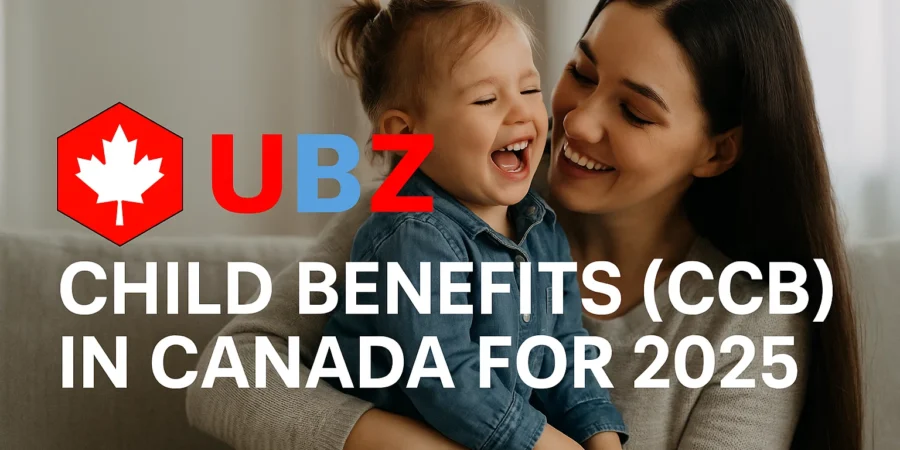Raising kids in Canada is a rewarding yet expensive journey. From diapers to daycare, school supplies to sports fees, the costs add up quickly. To ease this financial burden, the Canadian government offers the Canada Child Benefit (CCB), a tax-free monthly payment designed to support families with children under 18. As we move into 2025, the CCB is seeing some important updates that every parent should know about. In this guide, I’ll break down what the CCB is, how it works, who’s eligible, and what’s changing in 2025, all while keeping it real and relatable. Let’s dive in!
What is the Canada Child Benefit (CCB)?
The CCB is a cornerstone of Canada’s social safety net, launched in 2016 to replace older programs like the Universal Child Care Benefit. It’s a tax-free payment administered by the Canada Revenue Agency (CRA) to help families cover the costs of raising kids. Whether it’s groceries, rent, or summer camp, the CCB gives parents a bit of breathing room. The program is income-adjusted, meaning lower-income families get more support, but even middle-income households can qualify for a portion of the benefit. According to government reports, the CCB has lifted hundreds of thousands of children out of poverty since its introduction, making it a game-changer for many families (Canada.ca, 2024).
How Much Can You Get in 2025?
For the 2024-2025 benefit year (July 2024 to June 2025), the maximum annual CCB payments are:
- $7,787 per child under 6 (about $648.91/month)
- $6,570 per child aged 6 to 17 (about $547.50/month)
These amounts are for families with an Adjusted Family Net Income (AFNI) of $36,502 or less. If your income is higher, the benefit gradually decreases, but even families earning six figures might still get a reduced payment. The CRA recalculates your benefit every July based on your previous year’s tax return, so your 2024 taxes will determine your payments starting in July 2025.
Here’s the big news for 2025: starting July 2025, the CCB will increase by 2.7% to keep up with inflation, based on the Consumer Price Index (CPI). This means the maximum annual payments for the 2025-2026 benefit year will be:
- $7,997 per child under 6 (about $666.42/month)
- $6,748 per child aged 6 to 17 (about $562.33/month)
This boost, though not as large as the 4.7% increase in 2024, adds $210 per child under 6 and $178 per child aged 6 to 17 annually. It’s a small but meaningful bump to help with rising costs like food and housing (Daily Hive, 2025).
What’s New in 2025?
The CCB is getting a few tweaks in 2025 to make it even more supportive:
- Inflation Adjustment: As mentioned, the 2.7% increase ensures the benefit keeps pace with the cost of living. This indexation, in place since 2018, helps maintain the CCB’s purchasing power.
- Higher Phase-Out Threshold: The income level at which benefits start to decrease is rising from $36,502 to $37,487 in July 2025. This means more families will qualify for the full benefit or see a slower reduction in their payments. For example, a family earning $37,000 in 2025 will get more CCB than they would have in 2024 (Narcity, 2024).
- Extended Support After a Child’s Death: Starting January 2025, if a child passes away, CCB payments (and the Child Disability Benefit) will continue for six months, provided the family remains eligible. This compassionate change helps cover costs like funeral expenses during a difficult time (MoneySense, 2025).
- Child Disability Benefit (CDB): If your child qualifies for the Disability Tax Credit, you may also get the CDB. For July 2025 to June 2026, the maximum CDB will increase to $3,411 per child (up from $3,322), or about $284.25/month. This extra support is crucial for families managing costs like therapies or specialized equipment (Immigration News Canada, 2025).
Who’s Eligible?
To qualify for the CCB, you need to check a few boxes:
- Residency: You must be a Canadian resident for tax purposes (citizens, permanent residents, protected persons, or temporary residents living in Canada for at least 18 months with a valid permit).
- Caregiver Status: You must be the primary caregiver of a child under 18, meaning you’re responsible for their daily needs.
- Tax Filing: You (and your spouse or common-law partner) must file annual tax returns. The CRA uses your AFNI to calculate your benefit, so skipping taxes could delay or stop payments.
- Child’s Status: The child must live with you and be a Canadian resident.
New immigrants, including permanent residents, qualify right away, while temporary residents need to meet the 18-month residency rule. Shared custody? Each parent gets 50% of what they’d receive with full custody, based on their own AFNI.

How to Apply and Get Paid
Applying for the CCB is straightforward:
- Newborns: In most provinces, you can apply when registering your child’s birth, often at the hospital. This is the fastest way.
- Online: Use the CRA’s My Account portal to apply or update your info.
- Mail: Fill out Form RC66 (Canada Child Benefit Application) and mail it to your local tax centre. Late applicants may need extra documents like a birth certificate.
Payments are issued around the 20th of each month, but if the 20th falls on a weekend or holiday, it’s the last business day before. For 2025, key dates include March 20, April 17, and May 20. If your annual benefit is less than $240, you’ll get a lump sum in July. Direct deposit is the way to go for faster payments, sign up via CRA My Account or call 1-800-959-8281.
Provincial and Territorial Benefits
On top of the CCB, many provinces offer their own child benefits, often combined with CCB payments. For example:
- B.C. Family Benefit: Provides up to $500 annually for low-income single-parent families, with a bonus continuing through June 2025 (Gov.BC.ca, 2025).
- Alberta Child and Family Benefit (ACFB): Includes a base and working component, paid quarterly, with maximums based on income and family size (Alberta.ca, 2024).
- Newfoundland and Labrador Child Benefit: Offers $150-$170/month per child, plus a nutrition supplement for kids under 5 (Gov.NL.ca, 2025).
Check your province’s website or the CRA’s Child and Family Benefits Calculator to estimate your total benefits.
Tips to Maximize Your CCB
- File Taxes Early: Submit your 2024 tax return by April 30, 2025, to avoid payment disruptions.
- Update Your Info: Report changes in income, marital status, custody, or address via CRA My Account.
- Sign Up for Direct Deposit: It’s faster and avoids delays, especially with potential Canada Post strikes.
- Explore Provincial Benefits: Don’t miss out on extra support from your province.
Why It Matters
The CCB is more than just a monthly deposit, it’s a lifeline for families navigating Canada’s high cost of living. With inflation pushing up prices, the 2025 increase and policy changes show the government’s commitment to supporting parents. Whether you’re a new immigrant, a single parent, or just trying to make ends meet, the CCB can make a real difference.




Leave a Reply